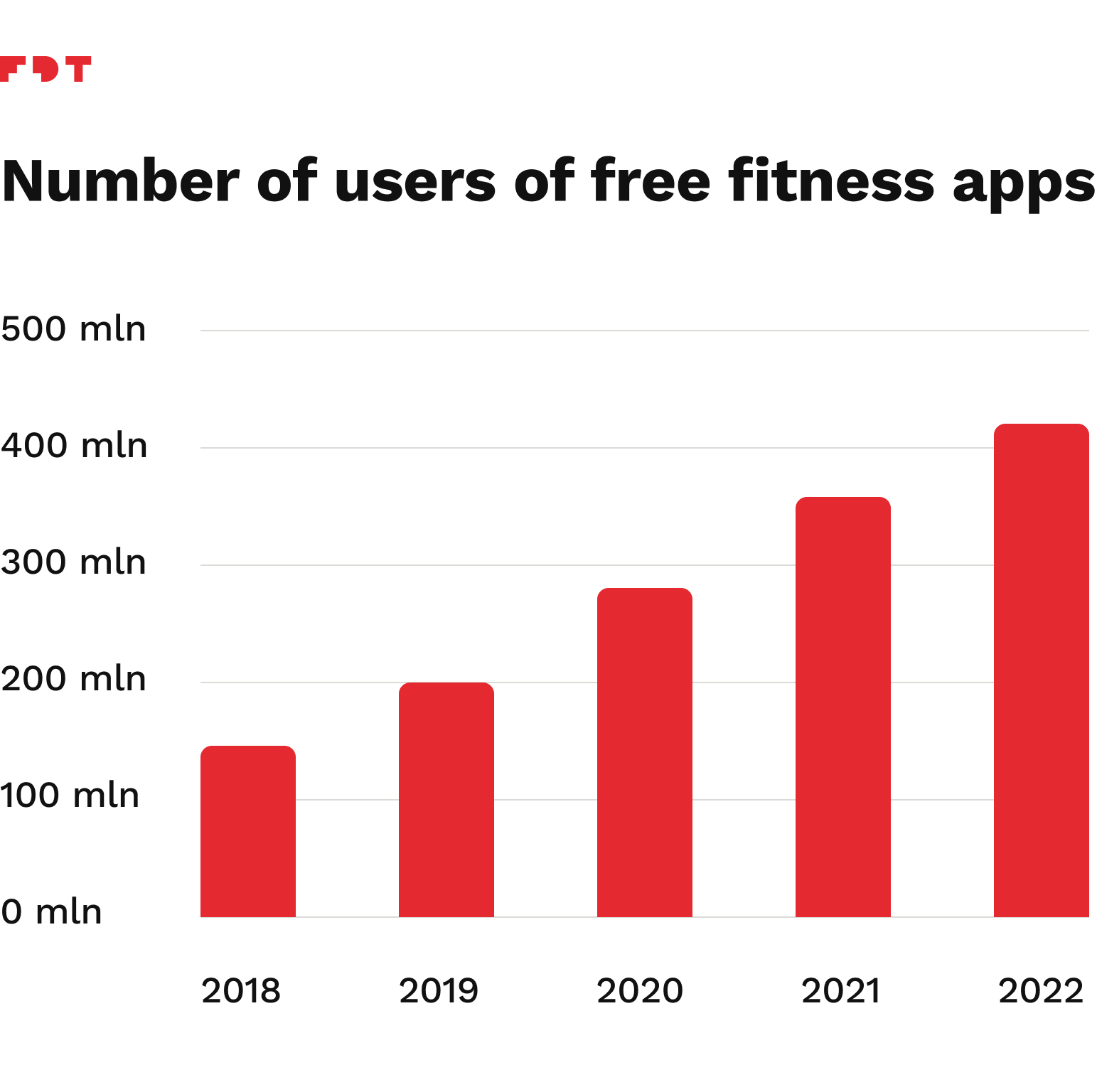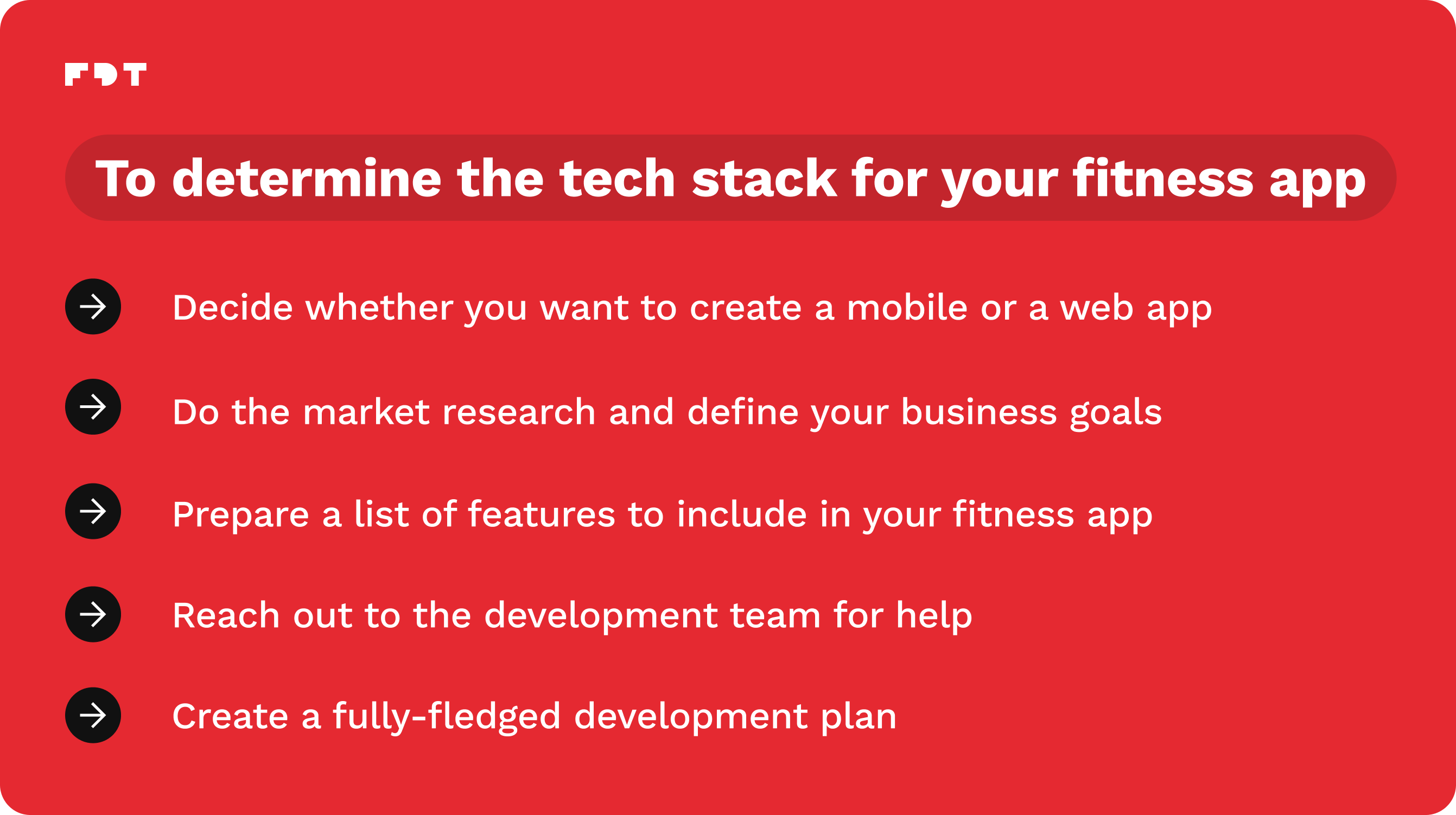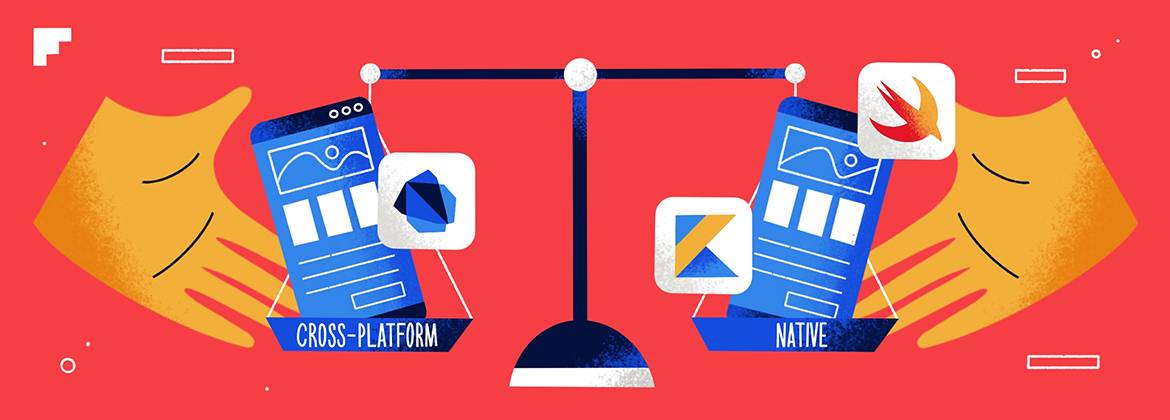
How to choose the tech stack for a fitness app?
Thinking about creating your own fitness app? They have become very popular and are undoubtedly still gaining popularity, especially since 2020 when there was a lockdown. So it might be a very good idea to go for it and start a fitness business, maybe also based on a mobile app or supported by a fitness app.
Wellness, workout, health and fitness apps perform along with activity tracking apps. It’s pretty hard to divide those into separate branches, so these terms are often interchangeably used. That’s what also happens in this article.
Below you will find some facts about the fitness market, then we’ll present you with possible options concerning the technology in fitness apps and this will give you a hint on which option to choose for your app idea!
Contents
What’s a fitness app?
A fitness app can have different meanings as various ideas related to it are being tested. Different products that are called fitness apps or workout apps include for example:
- Health and fitness apps
- Apps for wearable devices
- Mobile, tablet and TV apps for home exercises (also with video tutorials and training plans, including outdoor activities)
- Diet and calories counting apps
- Workout and sleep tracking apps (also with progress trackers)
- Apps enabling contacting with your personal trainer (also using AI, VR and AR)
- Apps offering attending live classes
- Health club apps.
Fitness app market
If you come up with a fitness app idea, you better analyse the market well. There’s already quite a great competition. These mobile apps also include a mix of the above-mentioned and other features. You want to create a new workout app? Go ahead, but make it stand out, otherwise your product will drown in the sea of activity tracking apps, diet and nutrition apps and others.
The global fitness app market is growing significantly – in 2019 there were 203.45 million users of free fitness apps, while in 2021 they’ve reached 359.53 million users. Revenue in the Fitness Apps segment is projected to reach $16.60bn in 2022.

Most popular fitness apps in 2022
According to Statista’s leading fitness and sports apps worldwide in March 2022 report, in March 2022:
- MyFitnessPal was the leading fitness and sports mobile app, generating in-app revenues of almost 9 million U.S. dollars
- Fitbit ranked second, with roughly 8.1 million U.S. dollars in combined revenues via Google Play and Apple App Store
- Strava accumulated around 5.6 million U.S. dollars in revenues
- Peloton, the mobile app for popular stationary bikes and treadmills, generated IAP revenues of roughly 3.5 million U.S. dollars.
The fitness app market is very extensive and full of various possibilities for mobile apps users. The above-mentioned workout apps have many similarities, but they also differ in many aspects. However, all of them have built, apart from the mobile app, a brand that people recognise, or are simply the best in the category.
Fitness & workout app tech stack – possible options
Let’s explore different options that app owners have when it comes to choosing the tech stack for fitness app development, along with some hints on which might be the best for your idea and your business. It’s not like one technological path is always the best for a fitness app.
First of all, do you plan to build a mobile app or a web app? Or maybe you’d like to create both? For mobile app development, you have two options: native and cross-platform development. Let’s find out more about it.
Native app development
Native app development is one of your options when deciding to create any mobile app. From definition, native software is designed to run on a particular operating system. In a more technical sense, native code is written specifically for a certain processor. On the opposite side there are cross-platform apps – intended to run on multiple operating systems and/or computer architectures.
So to sum up: a native mobile app is a software program developed for use on a particular platform (such as Android and iOS) or on a particular device written in a programming language that is native to that platform.
Native apps can take advantage of all the system features without exceptions. May it be the camera, list of contacts, GPS, voice recognition or anything else you’d like to use in your app, there will be no problem if you choose native app development. That’s why it might be a better choice for demanding apps that require complex features. However, if you plan to develop a fitness app for both iOS and Android users, you’ll have to build two separate apps.
Tech stack
When it comes to programming languages, for iOS apps, there is Swift (recommended) or Objective-C. For Android apps, you can choose Kotlin (recommended) or Java.
Cross-platform app development
It’s the second option for every new mobile app development. Actually, app owners often decide to rewrite the app with a cross-platform framework, when their native app gets too old. That’s because cross-platform technologies have become popular in recent years and offer lots of benefits for businesses. For example, it’s easier to maintain and develop cross-platform apps as there’s only one code base for both iOS and Android versions.
What is cross-platform app development? It’s developing apps for multiple platforms (operating systems) or devices with one code base, at the same time, instead of building separate apps for each one. There are lots of methods of building such an app. Cross-platform development is used in various cases. Sometimes it’s about compiling different versions of the same software for multiple operating systems and sometimes developers build one code to then make minor changes to it for each platform with the use of APIs. Generally, one developer is often enough to develop a cross-platform mobile app for Android and iOS.
Cross-platform app development became so popular because it can enable the app to be made available to a wider audience in a shorter time. On the other hand, it can be inefficient in some cases.
Tech stack
The most popular cross-platform frameworks are Flutter (with 42% share in 2021) and React Native (with 38% share in 2021). If you choose Flutter for your fitness app development, the programming language for that framework is Dart. If you decide to go with React Native, you’ll use Javascript.
Example of a fitness app built with Flutter
One of our Partners decided to use Flutter for their fitness mobile app with social network elements. The app enables users to prepare and share workouts and training content with your group, create interactive leaderboards, chat with teammates, organise online or IRL sessions, matches and events, and much more!
Check out the case study of Squaddy app here.

Web app development
There are also web apps, accessed via a web browser on the web, e.g. Google Chrome, Firefox, Safari. A web app generally cannot be downloaded from mobile stores. They provide various functionalities but do not work offline. However, remember that developing an app is never black or white. Sometimes different approaches and technologies are mixed to create a solution that fits your needs.
While native apps are written for a specific device, a web app is generally available on any platform and browser. An example of such an app is YouTube. These apps are quick and fairly easy to build, created using a single code base. However, they are not as fast and powerful as native apps.
Tech stack
Creating a web application involves creating a frontend (what users can see – the look of the app) and a backend (what users can’t see – how the app works). Technologies used for frontend development are: Angular, React and Vue.js, while for backend Node.js, Ruby on Rails, PHP and Python can be used.
Choosing technologies for your own fitness app
The second thing to do is list all the features you want to include in the app. Before you can create a fitness app, you need a business plan and you need to know what core features your app is to have. It wouldn’t be a good idea to choose the tech stack before you decide on all or most of the features.
This choice is actually mostly dependent on features. For example, if you choose to implement some of the latest fitness app trends in the app as a core feature, native development might be a better option. On the other hand, if your fitness app is to include a simple calories calculator with diet plans, cross-platform development will probably be a much better choice.
Having the features listed, you’ll be able to define your needs for the next tools needed for development. For example, knowing that the app is supposed to enable payments, you’ll need to choose a provider of such a solution, knowing whether and how the notifications should work, you’ll know which platform to use for this purpose.
Determining third-party services
Having the above in mind, here are some more third-party services options your fitness app might require using:
- Analytics to measure the performance (e.g. Google Analytics with Firebase, Mixpanel)
- Payment gateways for in-app purchases and others (e.g. Paypal)
- Push notifications management (e.g. Firebase)
- Promotion, including mobile ads (e.g. Google AdMob).
More hints to follow to choose the tech stack
If you remain unsure which technologies to choose and which approaches to take, you can jump to Native vs cross-platform mobile app development. Which one to choose?, but I’d recommend trying to go through the below list first. Once you follow all the above and below steps, you will most likely be ready to say what your technical preferences for your fitness app are.
Do market research and determine your business goals
As mentioned before, a fitness app (or a workout app) can include very different features and apps in this category vary a lot. That’s why, the first thing to do is determine your business goals – determine what the app would serve for. Once you have an outline of your idea, you should start analysing the fitness app market, including paid apps and those offering in-app purchases, no matter what your idea for monetization is.
When you begin to work on your mobile app development, it’s essential to check the viability of your idea and therefore to check if the project has a chance to become successful and profitable. A product roadmap might be an especially helpful tool to determine the tech stack for your fitness app.
Mobile app market research can include:
- Competitors analysis
- Establishing your marketing strategy
- Target audience research
- Determining your business goals
- SWOT analysis
- Creating a Business Model Canvas
- Creating a product roadmap
- Defining a Unique Value Proposition

After the market research, create a list of requirements, such as this:
- Users can enter the product’s name and see how many calories it has
- Users can browse workout video tutorials from different categories
- The app can be connected to a smartwatch
- Users can see their progress on charts.
These descriptions will need more detailed explanations but this is a good starting point to create a fitness app.
Take advice from the development team
You might have issues with some of the above points, but even if you don’t, it’s not everything that needs to be done to be ready for fitness app development. With the technical knowledge and experience, it’s much easier to ask the right questions and find out what tech stack will be the best for your fitness app. The development team should be able to help you decide about the basic features if you’re not sure about them and will advise on what you can optimise in the business plan.
To be prepared to create a fitness app in the best possible way, try to be very precise with the requirements and the team will help you with the rest. Now, if it’s helpful for you, check out our tips on how to find the right mobile app development team to choose the people that will really meet your expectations and help you build your own workout app.
Pick the best option for your app
Even if you’re going to start with an MVP, it’s important to keep focus on planned-for-later features as well. Again, by doing an in-depth market analysis including app users research and by creating detailed descriptions of basic features of your fitness app, you’ll facilitate and shorten the work of the development team and influence positively on the overall development plan. Don’t try to choose the tech stack for your app by yourself or determine the app development cost if you don’t have a fully-fledged plan.
Conclusion
To sum up, determining the tech stack for your fitness app will be possible once you:
- Decide whether you want to create a mobile or a web app (or maybe both?)
- Prepare a list of features to include in your fitness app.
Additionally, doing market research, defining your business goals precisely and creating a fully-fledged development plan will definitely help you make that choice. Remember that reaching out to the development team to help you with these actions can be very valuable.







